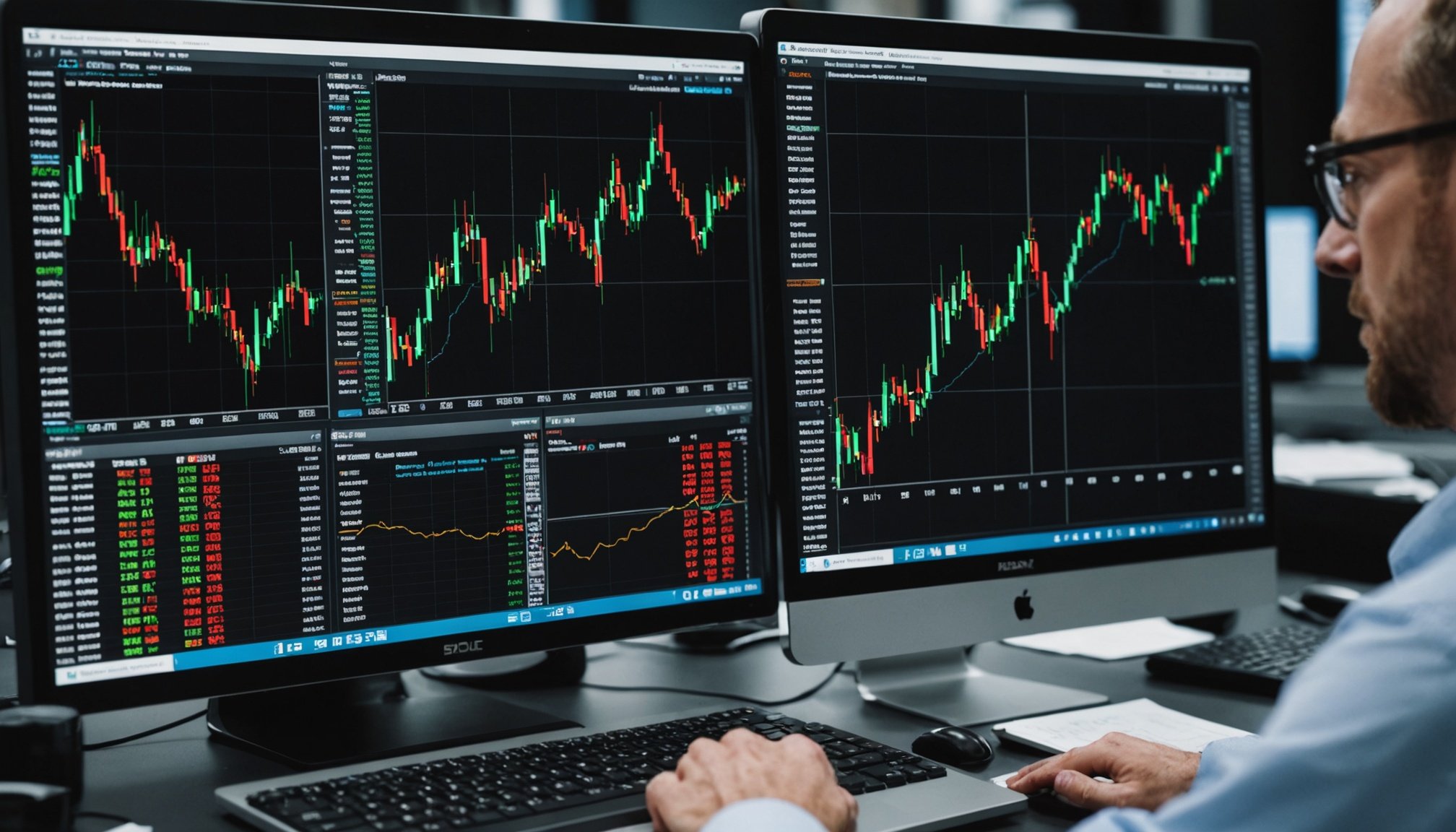Understanding Automated Trading Systems
Automated trading has revolutionized the financial markets by integrating technology with traditional trading methods. These trading systems are built on algorithms that execute orders based on pre-set criteria without human intervention. The key components include data management, strategy formulation, risk management, and trade execution. Each part ensures that the automated trading system operates smoothly and effectively.
Efficiency is paramount in trading, especially in markets where speed and accuracy determine success. Automated systems excel in this aspect by processing complex computations and executing trades in fractions of a second, far surpassing human capabilities. The ability to analyse vast amounts of data quickly ensures that trading opportunities are seized instantly, optimising returns and minimising risks.
This might interest you : Maximize your workflow with top notion templates today
Key success factors in automated trading revolve around the robustness of algorithms and the precision of execution. For traders, continuously refining trading strategies and incorporating machine learning techniques can significantly enhance performance. Additionally, thorough backtesting and ongoing performance monitoring are crucial to adapt to the continually evolving market conditions. This creates a structured approach that can yield consistent results and potentially higher profits.
Technical Tools and Programming Languages
Choosing the right programming language and technical tools can significantly influence the success of your trading algorithms. Among the most popular programming languages for building trading systems are Python and R. Python is widely favored for its simplicity and extensive libraries such as Pandas, NumPy, and Matplotlib, which facilitate numerical computations and data analysis. R, on the other hand, is renowned for statistical analysis and visualization, appealing to those inclined towards rigorous data examination.
Topic to read : Unlocking the power of multilingual ai chatbots: key strategies for optimal performance
Essential Tools and Frameworks
To support the development of automated trading systems, several tools and frameworks can be utilized. Platforms like QuantConnect and Alpaca, along with APIs, provide robust environments to test and deploy strategies efficiently. Understanding these tools and their capabilities is crucial for smoothly integrating trading algorithms into the market infrastructure.
Python vs. R: A Comparative Analysis
When comparing Python and R for automated trading, Python often takes the lead due to its versatility and comprehensive community support. However, R’s advanced statistical analysis capabilities might be preferable in specific quantitative scenarios. The decision hinges on the desired focus, be it data manipulation or statistical modeling, pushing one to assess their project’s unique requirements.
Developing Effective Trading Strategies
Creating effective trading strategies requires a systematic approach, combining market analysis and strategy development techniques. A robust plan begins with identifying your trading goals and understanding different market conditions. By establishing clear objectives, traders can tailor their strategies to fit specific financial markets and instruments.
Steps for Strategy Development
- Define Goals: Determine the risk level you’re comfortable with and the potential returns you aim for.
- Analyze the Market: Conduct thorough market analysis to identify trends and price movements. Consider using both fundamental and technical analysis to gather insights.
- Key Indicators & Signals: Utilize indicators like moving averages, RSI, and MACD for actionable signals. These tools aid in understanding the market dynamics and predicting future price actions.
Algorithmic Trading and Backtesting
Algorithmic trading leverages computational power to implement strategies based on predefined criteria. This method ensures faster and more precise execution, minimizing emotional bias. However, the strategy must undergo backtesting to evaluate its effectiveness. By pre-testing strategies against historical data, one can optimize performance and enhance the potential for consistent profits.
Risk Management Techniques
Navigating trading can be challenging, especially when managing trading risks. Effective risk management helps mitigate these challenges by employing various strategies.
To start, position sizing is crucial. It determines how much capital you allocate to a specific trade. Calculating this effectively involves assessing your total available funds and setting a risk percentage per trade. This method prevents significant losses that could arise from over-exposure to a single position. For instance, risking only 1-2% of your capital per trade is often recommended to maintain a sustainable trading approach.
Another vital component of risk management is the use of stop-loss orders. These are predefined points set on a trade that automatically trigger a sale to prevent further losses. In automated trading systems, stop-loss orders ensure that emotions don’t interfere, helping you stick to your set strategy.
Implementing these techniques can greatly improve your trading by safeguarding capital and enhancing consistency. By focusing on position sizing and stop-loss orders, traders can competently manage trading risks, ensuring their approach is both calculated and strategic.
Backtesting Methods and Best Practices
Backtesting is a crucial component in the development of automated trading systems. It allows traders to evaluate how effectively a trading strategy would have performed using historical data. Precise backtesting can help enhance trading performance by identifying potential weaknesses and strengths in a strategy before actual capital is at risk.
To get the most out of historical data, it’s important to follow best practices such as ensuring the data is clean and comprehensive. Avoid using incomplete data sets, as this can lead to unreliable results. It’s vital to optimize your backtesting approach, but be cautious of over-optimizing, which can lead to a situation known as ‘curve fitting’. While a perfect fit for past data might look promising, it rarely translates well to future market conditions.
Statistical validation is another best practice that can help avoid common pitfalls. Use techniques to confirm that your results are not due to random chance. Additionally, take note of hidden biases and assumptions within the data. These steps help ensure that backtesting remains a robust tool in achieving optimal trading performance.
Real-World Examples of Successful Automated Trading
Examining successful automated trading systems provides invaluable insights for aspiring traders. Deploying case studies of top-performing systems allows us to explore the intricacies of their designs and strategies. Take, for instance, an automated trading system that harnesses machine learning to analyse market trends, leading to consistent returns. This case study showcases how sophisticated algorithms predict price movements with notable accuracy.
Evaluating success in automated trading hinges on key performance metrics. It involves scrutinising metrics like Sharpe ratio, which assesses risk-adjusted returns, and maximum drawdown, reflecting the worst cumulative loss. Such metrics are crucial in determining a system’s efficacy and resilience. Profitable systems often maintain a high Sharpe ratio while minimising drawdown.
Lessons drawn from these real-world examples highlight important considerations. One pivotal lesson is the significance of ongoing monitoring and refinement. Successful automated trading systems are not static; they evolve with changing market dynamics. Another crucial insight involves balancing complexity and transparency. Systems must be sophisticated enough to grasp market nuances yet remain transparent for effective evaluation. By integrating these lessons, traders can craft strategies tailored to dynamic financial environments.
Optimizing Performance and Adaptability
In the dynamic world of trading, performance optimization is key to success. It involves enhancing the efficiency and effectiveness of your trading system. This could mean tweaking algorithms, improving execution speed, or integrating new data sources to make more informed decisions. Each of these practices helps maintain a competitive edge in the fast-paced trading environment.
Equally important is maintaining adaptability in trading strategies. Markets are inherently unpredictable, and flexibility is crucial to navigate these changes. By constantly evaluating and adjusting strategies, traders can capitalize on new opportunities and minimize losses. This might involve adopting flexibility in decision-making processes or leveraging technology to swiftly analyze market shifts.
Responding to changing market conditions requires well-defined strategies. Regularly analyzing market trends and adapting trading configurations can enhance resilience against volatility. For example, diversifying portfolios to reduce risk or employing hedging strategies to safeguard against downturns can be effective. Moreover, constant learning and staying updated with market developments allow traders to remain agile and responsive.
Ultimately, balancing performance optimization with adaptability ensures a robust trading environment that can withstand fluctuating markets while maximizing potential returns.
Common Pitfalls in Developing Trading Systems
Developing a trading system can be fraught with common pitfalls that are crucial to avoid. One frequent mistake is inadequate testing and validation. While it may seem time-consuming, thorough testing ensures your system performs well under various market conditions. Testing and validation involve back-testing the system using historical data to evaluate efficacy.
Another common error is over-optimization, also known as curve fitting. This arises when a trading system is excessively fine-tuned to past data, appearing perfect historically but failing in real-time markets. To combat this, use a robust out-of-sample testing strategy.
Risk management mistakes can severely impact trading systems. Define clear risk parameters and adhere to them, preventing over-leverage and excessive losses.
Effective strategies to mitigate these risks include setting realistic goals and continuously monitoring system performance. Regular updates and refinements based on market changes and your own trading experience are vital.
Avoiding errors requires diligence and understanding of the market, ensuring your trading system remains resilient and effective over time.










